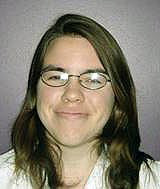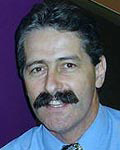Introduction
Following the recommendations of the General Practice Strategy Review Group1, Rural Workforce Agencies (RWAs) were established in all Australian states and the Northern Territory in July 1998. Key activities were to develop and influence policy on the rural general practice workforce and to coordinate rural and remote general practice initiatives at the state and territory levels. They were required to act to promote and facilitate the supply, recruitment, retention, education, support and better distribution of GPs in rural and remote areas.
Core functions of the RWAs were to develop strategic policy and initiatives at the state and territory and local levels to assist in the recruitment and retention of GPs for rural and remote areas by means of:
- implementation of continuing medical education (CME) and locum programs
- delivery of allocated rural incentive funds to rural GP support and workforce recruitment programs including family, professional, orientation, infrastructure, peer and crisis support initiatives
- development of strategies, with relevant state based organizations and divisions to help remedy the general practice workforce misdistribution at state and territory levels
- working with other rural workforce agencies to achieve national coordination and standardization of rural general practice workforce conditions and solutions to the problems
- liaison and negotiation with governments and other stakeholders in relation to broad range rural health workforce matters as well as rural and remote general practice
- collecting, collating, analyzing and distributing rural workforce data, including the maintenance of an agreed minimum data set.
Since its establishment as a rural workforce agency, Health Workforce Queensland (HWQ; formerly Queensland Rural Medical Support Agency) has seen the provision of high quality, rurally relevant medical education and training as a key retention and support strategy for rural and remote medical practitioners in Queensland, Australia.
The belief that the provision of rurally relevant, high quality CME is an important factor in retaining GPs in rural and remote communities, emanates from a significant body of research over the past 10 to 20 years that suggests access to CME by rural and remote medical practitioners can be problematic due to professional isolation, lack of locum relief and heavy workload2,3. Earlier research by Kamien4, Hoyal5 and Strasser et al.6,7 all identified access to CME as being an important factor in medical practitioners' decisions to stay or leave rural and remote practice.
In an evidence-based review of recruiting and retaining GPs in rural areas, McDonald8,9 has suggested that while increasing on-going medical training to rural GPs has been a key retention strategy, the effects of CME programs on recruitment and retention have been difficult to evaluate9. He suggested that while a number of Australian studies evaluate participation, awareness and attitudes to CME, they do not measure the actual effectiveness of the programs on recruitment and retention8. The purpose of this article is to provide data on medical practitioners' perceptions of the effectiveness of CME workshops provided by HWQ over a 3 year period (2004-2006). In more recent times, the term CME has been replaced by CPD (continuing professional development); however, to maintain consistency the term CME will be used throughout this article.
Background
Health Workforce Queensland normally conducts approximately 15 CME workshops per year over 30 to 35 days. Table 1 provides a list of workshops provided in 2006. Between 230 and 250 rural GPs attend these workshops annually. The workshops differ from those offered by many other medical education providers in that they are designed specifically for rural and remote GPs and the types of presentations they are most likely to encounter in their communities. Workshop topics and themes are based on workshop feedback in terms of future topic preferences as well as an annual Educational Needs Analysis Survey completed by rural and remote medical practitioners. Table 2 provides the 12 most popular themes for 2007 based on responses from 369 GPs. The workshops utilize a variety of presentation formats and tend to incorporate hands on skills station scenarios and simulation utilising the types of facilities and equipment available in rural and remote communities. Travel and accommodation to attend these workshops are subsidized by HWQ with first preference given to medical practitioners in more remote locations. Depending on availability, rural and remote GPs in RRMA 4 to 7 locations10,11 are eligible for locum support when attending CME workshops. Alternatively, where locums are not available, workshops attendees are entitled to locum rebates.
Table 1: Continuing medical education workshops offered during 2006
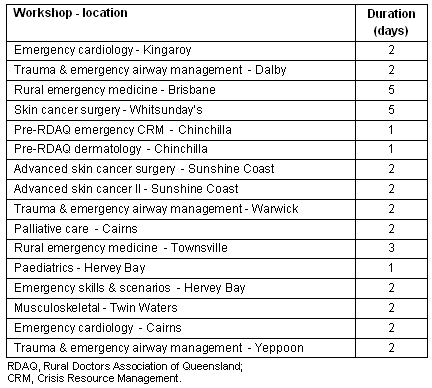
Table 2: Nominated workshop topics in descending order of frequency for 2007 (n = 369)
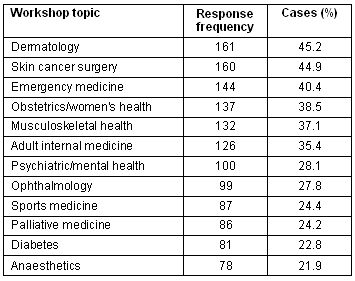
The Rural, Remote and Metropolitan Areas (RRMA) classification was developed in 1994 as a remoteness classification based on 1991 population census data and 1991 Statistical Local Area (SLA) boundaries11.
The RRMA classification consists of three zones (metropolitan, rural and remote) and seven classes (Table 3) and combines a distance measure with a population density measure.
RRMA is used by a large number of government programs to assist with targeting, to determine eligibility for initiatives or for reporting purposes. CME workshops provided by HWQ are designed for, and targeted to, medical practitioners working in RRMA 4 to 7 locations.
Table 3: Structure of the RRMA classification
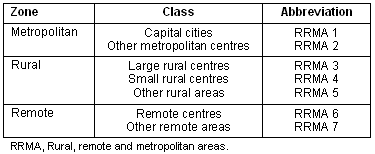
Methods
Each session/topic in each workshop is evaluated on a daily basis using a written questionnaire incorporating 5 point Likert scales in terms of appropriateness to skill level, relevance to learning needs, utility in updating or gaining new knowledge and skills, relevance to the type of work the practitioners and appropriate coverage of topic areas.
Additionally, for all workshops (except those offered during the annual Rural Doctors Association of Queensland [RDAQ] conference), delegates from RRMA 4 to 7 locations are asked to indicate their extent of agreement with a series of statements:
- participation in this workshop has assisted in alleviating my sense of professional isolation
- access to, and participation in, CME activities contributes to my confidence in practising in a rural and remote locality
- without access to CME, I am less likely to remain in rural practice.
Similar to the session/topic evaluations, these questions are asked as part of the overall evaluation on the final day of the workshop, using a written questionnaire incorporating 5 point Likert scales ranging from strongly disagree to strongly agree. It is the extent of agreement to these questions that forms the thrust of this article.
Over the period 2004 to 2006, a total of 753 medical practitioners participated in medical education workshops offered by HWQ. One hundred and eighty participated in the RDAQ conferences and did not complete the overall evaluation. A small number of medical practitioners from RRMA 1, 2 and 3 locations also participated in some workshops but are not included in the questions pertaining to professional isolation, confidence in practicing in rural and remote localities and likelihood of remaining in rural practice.
Excluding RDAQ conference attendees, doctors from RRMA 1 to 3 locations and early leavers, 426 to 429 respondents remained who provided comments in relation to professional isolation, confidence in practising in rural and remote localities and likelihood of remaining in rural practice. It is possible that some of these respondents participated in more than one workshop over the 3 year period. Because these were relatively small in number, multiple responses from the same practitioner over the 3 year period have not been excluded.
Evaluation data for all sessions/topics presented and the overall evaluation were entered into SPSS (vers.14) (SPSS Inc; Chicago, IL, USA) for analysis following the workshop. Respondents had the option of either providing or not providing identifying information. A summary report was prepared for each workshop to provide feedback to the Medical Education and Training team and to presenters and attendees.
Length of time in rural and remote practice was also calculated for attendees at the 2006 workshops. Reliable duration data was available for 125 of the 227 attendees.
Results
Table 1 displays the 16 CME workshops offered during 2006, including location and duration. Table 2 details the results of the Education Needs Analysis Survey conducted during September and October 2006, displaying the 12 most requested topics for 2007 based on feedback from 369 respondents. Due to multiple responses the percentage of cases does not equal 100%.
Figure 1 displays the extent of respondents' agreement with the statement that access to CME contributes to confidence in practising in rural and/or remote locations. Data from 429 respondents suggest that 94% agree or strongly agree that access contributes to confidence in practising in rural and/or remote locations.
A second question (Fig 2) pertains to respondents' perceptions as to whether access to CME alleviates professional isolation. Again, data suggest that 93% of respondents (n = 427) agree or strongly agree that access to CME alleviates professional isolation.
A third question (Fig 3) attempts to measure whether access to CME increases the likelihood of respondents remaining in rural practice. Data suggest that 80% of respondents (n = 426) agreed or strongly agreed that they were less likely to remain in rural practice without access to CME.
Duration in rural and remote practice was also calculated for workshop attendees during 2006. Available data for 125 attendees indicated that the average duration was 12.1 years (SD 9.6) with time in rural and remote practice ranging from 0.5 to 44 years.
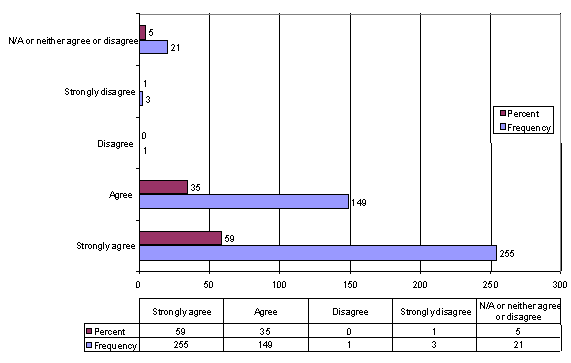
Figure 1: Access to continuing medical education contributes to confidence in practicing in rural and remote locations (n = 429).

Figure 2: Access to continuing medical education alleviates professional isolation (n = 427).
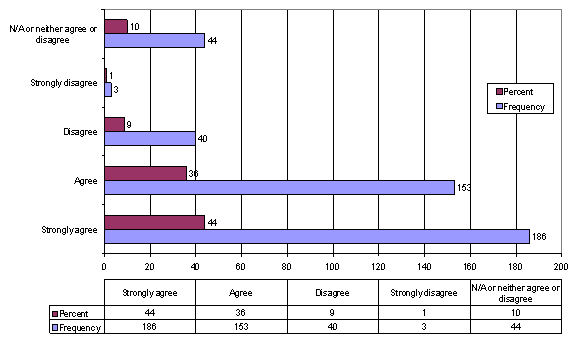
Figure 3: Less likely to remain in rural practice without access to continuing medical education (n = 426).
Discussion
Evaluations provided by attendees indicate that the workshops provided by HWQ are extremely effective in increasing practitioners' confidence in practising in rural and remote communities, reducing professional isolation and increasing commitment to remain in rural practice. The data, while self-reported, are not survey data but based on written evaluations undertaken at the completion of each workshop. While data have been presented for a 3 year time period, the results were consistent with previous archived data that has been maintained by HWQ since 1999. Although based on self-report, the data supports the contention that the availability of professional support from well qualified colleagues and specialists, and from professional organizations through continuing medical education, is an important factor in the retention of rural doctors12. It is also acknowledged that there are other factors, including on-call arrangements, access to locum relief, local availability of services and proximity to a city or large regional centre, that interact with professional support to influence retention decisions. It is suggested, however, that data provided by workshop attendees indicate that the provision of high quality, rurally relevant medical education does impact on retention, and partly addresses McDonald's9 concerns that the actual effectiveness of CME programs on recruitment and retention has not been evaluated. As indicated, the average duration in rural and remote practice for attendees during 2006 was 12.1 years. A limitation of this study is that it is not possible to reliably discern the effects of professional support from other factors that interact with and impact on decisions to remain in rural and remote practice.
Conclusion
The provision of workshop delivered CME based on the expressed needs of rural and remote medical practitioners tends to be well received and highly valued by workshop respondents. While acknowledging that there are a variety of other factors that influence decisions to remain in rural and remote practice, we would suggest that professional support through the provision of rurally relevant medical education programs is an effective strategy in retaining doctors in rural and remote communities.
References
1. Commonwealth Department of Health and Family Services. General practice: changing the future through partnerships - report of the General Practice Strategy Review Group. Canberra: CDH&FS, 1998.
2. Alexander C. Why doctors would stay in rural practice in the New England health area of New South Wales. Australian Journal of Rural Health 1998; 6:136-139.
3. Hayes RB, Veitch PC, Cheers B, Crossland LJ. Why rural doctors leave their practices. Townsville, QLD: University of Queensland Centre for General Practice, 1997.
4. Kamien M. Staying in or leaving rural practice: 1996 outcomes of rural doctors' 1986 intentions. In: Proceedings 5th National Rural Health Conference; 14-17 March 1999; Adelaide, South Australia; 1999.
5. Hoyal FM. 'Swallowing the medicine': determining the present and desired modes for delivery of continuing medical education to rural doctors. Australian Journal of Rural Health 1999; 7:212-215.
6. Strasser R, Kamien M, Hays R, Carson D. National rural general practice study - demography and family characteristics (working paper). Melbourne: Monash University Centre for Rural Health; 1997.
7. Strasser RP, Hays RB, Kamien M, Carson D. Is Australian rural practice changing? Findings from the National Rural General Practice Study. Australian Journal of Rural Health 2000; 8:222-226.
8. McDonald J, Bibby L, Carroll S. Recruiting and retaining general practitioners in rural areas: improving outcomes through evidence-based research and community capacity-building - final report. Ballarat, VIC: Centre for Health Research and Practice, University of Ballarat, 2002.
9. McDonald J. Recruiting and retaining general practitioners: a mismatch between the research evidence and current initiatives? In: Proceedings 7th National Rural Health Alliance Conference; 1-4 March 2003; Hobart, Tasmania: NRHA; 2003.
10. Australian Institute of Health and Welfare. Australia's health 2002. Canberra: AIHW, 2002.
11. Australian Government Department of Health and Ageing. RTF 128/0405 - Request for tender to develop a geographical measure. Canberra: AGDOHA, 2005.
12. Humphreys J, Jones M, Jones J, Mara P. Workforce retention in rural and remote Australia: determining the factors that influence length of practice. Medical Journal of Australia. 2002; 176: 472-476.

